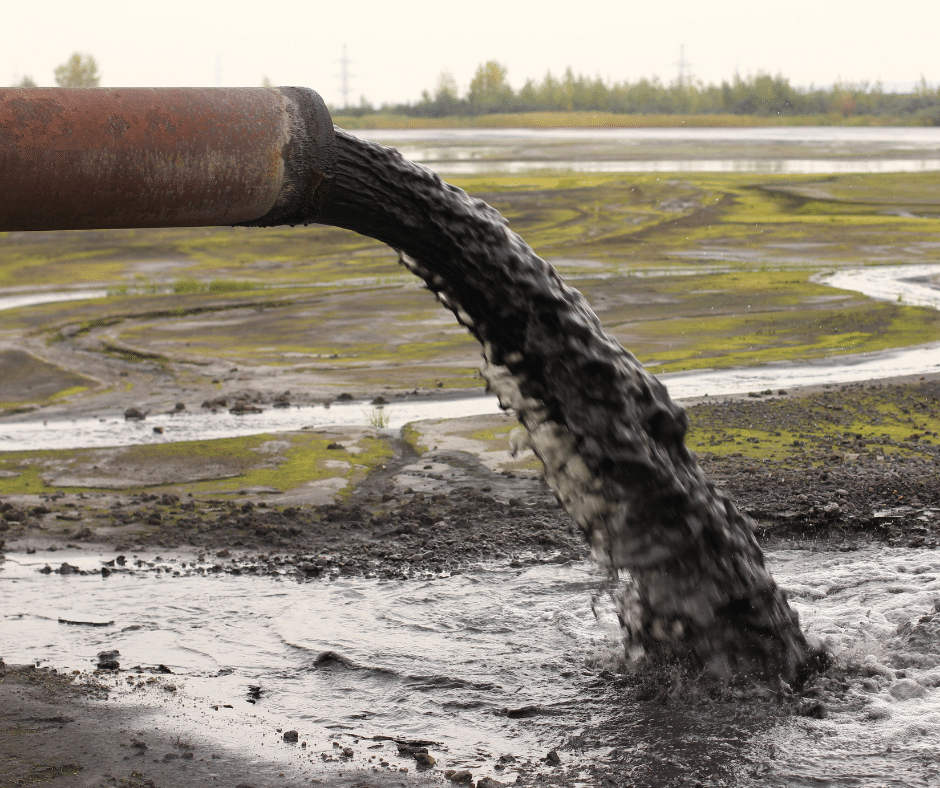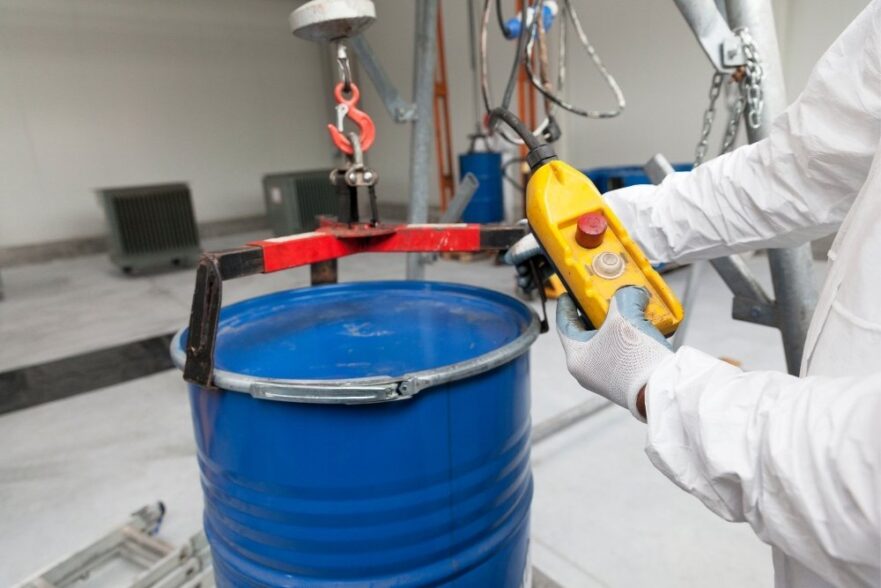Just How Fluid Garbage Disposal Works: An In-depth Overview of Techniques and Technologies Utilized

Summary of Liquid Waste Types
The intricacy of fluid waste types necessitates a thorough understanding of their characteristics and ramifications for disposal. Fluid waste can broadly be categorized into numerous types, including commercial, community, agricultural, and harmful waste. Each group shows unique homes, calling for specific administration approaches to minimize environmental and health dangers.
Industrial fluid waste originates from manufacturing procedures and frequently has a variety of pollutants, such as hefty metals, solvents, and organic substances. Metropolitan liquid waste, mostly making up wastewater from homes and commercial facilities, contains raw material, nutrients, and virus (industrial wastewater treatment). Agricultural liquid waste, including runoff from ranches, might contain fertilizers, pesticides, and pet waste, posing risks to water top quality and environments
Dangerous liquid waste is defined by its toxicity, reactivity, or possible to trigger injury. This group consists of substances like acids, bases, and certain chemicals that necessitate stringent handling and disposal protocols. Understanding these diverse fluid waste types is important for establishing reliable disposal approaches and guaranteeing compliance with ecological regulations. Appropriate category and characterization are crucial for implementing suitable treatment techniques and reducing the damaging influence on public health and wellness and the atmosphere.
Physical Treatment Techniques

Screening is the preliminary action, where bigger particles and particles are gotten rid of from the fluid waste utilizing screens or grates. This procedure shields downstream devices from damage and makes certain smoother operation. Complying with screening, sedimentation utilizes gravitational force to different solids from liquids. In sedimentation storage tanks, heavier bits settle at the bottom, creating a sludge layer, while the made clear fluid can be more dealt with.
Purification is one more crucial approach that involves passing the fluid with permeable products, such as sand or membrane layers, to capture smaller sized fragments. This step improves the top quality of the fluid, making it ideal for subsequent therapy procedures.

Chemical Therapy Techniques
Chemical therapy strategies are crucial for successfully handling fluid waste, especially in resolving liquified and colloidal impurities that physical techniques may not sufficiently remove. These strategies use numerous chemical representatives to reduce the effects of, precipitate, or transform unsafe compounds right into much less hazardous forms.
One usual approach is coagulation and flocculation, where chemicals such as alum or ferric chloride are contributed to promote the aggregation of suspended particles. This process enhances sedimentation, allowing for easier elimination of the resulting sludge. Furthermore, oxidation processes, using representatives like chlorine or ozone, are used to damage down intricate natural compounds and microorganisms, providing the waste much safer for discharge or more therapy.
Neutralization is one more critical method, which readjusts the pH of acidic or alkaline waste streams to neutral levels, protecting against prospective injury to downstream systems and the atmosphere. In addition, advanced oxidation processes (AOPs) utilize mixes of oxidants and ultraviolet more information light to deteriorate consistent contaminants, achieving a greater degree of therapy effectiveness.
Biological Therapy Processes
Organic treatment procedures play an important role in the management of liquid waste by making use of microbes to disintegrate natural issue and reduce pollutant levels. These processes can be extensively categorized right into anaerobic and cardiovascular therapies, each employing specific microbial areas to accomplish reliable waste destruction.
Aerobic therapy includes making use of oxygen to promote the breakdown of organic products by microorganisms. This process is typically carried out in triggered sludge systems, where aeration tanks provide a helpful setting for microbial growth, causing the oxidation of organic toxins. The resultant biomass can be divided from treated effluent with sedimentation.
On the other hand, anaerobic treatment occurs in the lack of oxygen, depending on different bacteria to break down natural issue. This approach is Visit This Link specifically useful for high-strength waste, as it creates biogas, a renewable resource resource, while minimizing sludge production. Technologies such as anaerobic digesters are regularly utilized in community and commercial applications.
Both anaerobic and cardiovascular organic therapies not just minimize the ecological effect of liquid waste but also help with resource healing, making them essential elements of sustainable waste administration strategies. Their flexibility, efficiency, and efficiency support their widespread implementation throughout numerous industries.
Arising Technologies in Disposal
Innovative methods to fluid garbage disposal are quickly evolving, driven by developments in innovation and a raising focus on sustainability. Among these emerging modern technologies, membrane bioreactors (MBRs) have acquired grip for their capability to combine organic therapy with membrane purification, resulting in premium effluent that can be recycled in numerous applications. MBRs make it possible for smaller impacts and much more efficient procedures contrasted to typical systems.
One more encouraging development is using anaerobic digestion incorporated with nutrient recovery modern technologies, which not only treats liquid waste but also generates biogas and recovers important nutrients like nitrogen and phosphorus. This twin advantage improves resource performance and decreases ecological influence.
Additionally, advanced oxidation procedures (AOPs) are being taken on for the destruction of complicated natural toxins. These approaches use effective oxidants and catalysts to break down impurities at the molecular degree, offering an extremely reliable remedy for difficult waste streams.
Furthermore, the combination of expert system and artificial intelligence in waste management systems is optimizing operational effectiveness and predictive maintenance, bring about reduced prices and boosted environmental compliance. These modern technologies mirror a significant shift in the direction of even more effective and sustainable liquid waste disposal methods.
Final Thought
In final thought, efficient liquid waste disposal demands a thorough understanding of different methods and innovations. The combination of physical, chemical, webpage and biological treatment approaches makes certain the effective management of varied waste types. Additionally, the development of innovative modern technologies boosts treatment efficiency and promotes sustainability in waste monitoring practices. By continuously advancing these methodologies, it ends up being possible to deal with the growing challenges related to liquid waste, inevitably adding to environmental defense and resource recovery.
Liquid waste disposal is an important aspect of environmental monitoring, calling for a thorough understanding of numerous methods and innovations tailored to various waste types. Liquid waste can extensively be classified right into numerous kinds, including industrial, local, farming, and unsafe waste. Agricultural fluid waste, consisting of drainage from farms, might consist of fertilizers, chemicals, and animal waste, positioning threats to water quality and communities.
Numerous physical therapy techniques play an important duty in managing liquid waste effectively - industrial wastewater treatment.In final thought, efficient liquid waste disposal necessitates a comprehensive understanding of various strategies and modern technologies